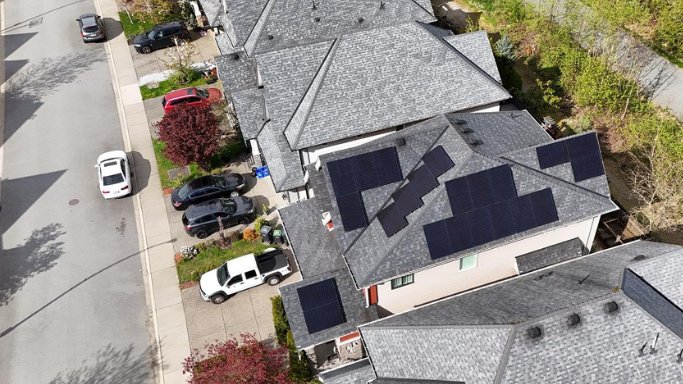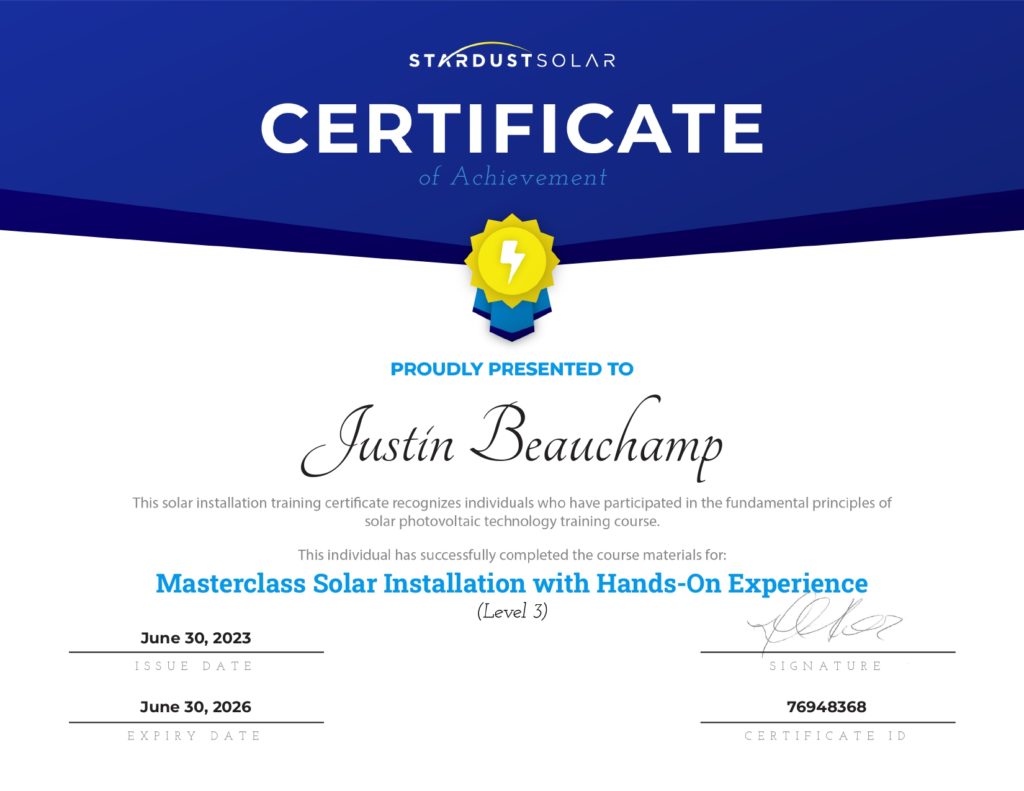Calgary aims for net-zero emissions by 2050, so it is placing a significant focus on the zero-carbon energy transition for a more sustainable future and healthier planet.
Even with building, transportation, and project development improvements, Calgary homes, businesses, and electric vehicles need zero-carbon electricity and heating fuels. The City’s climate strategy identifies sun power as essential to this transition.
But, every home or business owner must understand the solar industry and how the services of Calgary solar installers can help achieve a better future. So, let’s explore the role of the sun’s energy, the technical aspects of installation, and the associated costs.
The City’s strategy emphasizes advocacy and partnerships with utility providers, government agencies, and other stakeholders to achieve a provincial clean power transition.

The Urgency of a Zero-Carbon Energy Transition
Getting Calgary to zero emissions by 2050 will require a significant decrease in greenhouse gas (GHG) emissions. Currently, fossil fuels supply most building, transportation, infrastructure, and home’s electrical system. Even as new buildings become more energy-efficient, they still need heating, cooling, and powering. Electrified transit and electric vehicles (EVs) will also boost electricity demand. Hence, zero-carbon electricity and heating fuels are necessary. Calgary’s 2022 Climate Strategy proposes two zero-carbon pathways:- Renewable Energy: Implement Neighbourhood-Scale Renewable Energy Projects
- Support a Clean Provincial Energy Supply
PV Systems As Calgary’s Renewable Electricity Strategy
Understanding PV Systems
Photovoltaic (PV) systems use semiconductors to produce power directly from sunlight. Sun radiation excites electrons in these materials, resulting in an electric current.- Grid-Tied Systems. Linked to the local utility grid to feed back excess electricity. Getting rebates or compensation lowers electricity bills.
- Off-Grid Systems. Energy independence through battery-storage systems. Ideal for any remote location without utilities.
The Role of PV Units in Calgary’s Climate Strategy
The city has set forth several key actions within its climate strategy to accelerate the adoption of PV units:- D4.1: Create a citywide strategy to accelerate residential, commercial, and industrial installation.
- D5.1: Support the implementation of PV in community buildings such as community associations and schools.
- D5.2: Explore and support community and cooperative ownership models for local renewable supply.
Current City Projects
Calgary is building 1,880 kW of PV system parks at various locations:- Mount Pleasant Fire Station No. 7
- Bearspaw Water Treatment Plant
- Manchester Building M
- TELUS Spark PV around-mount
- Shepard Park
Climate Considerations for PV Output
Alberta enjoys many sunny days at an average of about 2,300 hours of sunshine annually. This makes the city particularly well-suited for electric production. But there are several weather considerations:- Cold Weather Performance. High temperatures reduce unit efficiency. Calgary solar panels work better in colder weather, producing more power than in warmer areas.
- Snow Coverage. Snow can temporarily reduce production. However, panels are usually tilted to help snow slide off. Solar panel system heat also melts snow quickly.
- Daylight Hours. Even though the area has plenty of daylight in the summer, the days are much shorter in the winter. This seasonal variation affects electric yield, requiring careful planning and possibly additional sources in winter.
Installation Considerations for PV Systems
| Consideration | Details | Sample |
| Site Assessment | Determines a site’s potential. Examine the roof’s orientation, tilt, shading, and structure. | Sunlight exposure is best on south-facing roofs tilted 30-45 degrees. |
| System Sizing | Building energy needs to determine system size. Calculated using historical usage and site sunlight yield. | Homes may need a 5–10 kW system to offset most of their needs. |
| Permits and Regulations | Local building codes govern Calgary unit installations | Coordinating with the local utility provider for grid compatibility. |
| Interconnection | Grid-tied systems need a bi-directional meter to measure grid consumption and export. | This requires coordination with ENMAX, the local utility. |
| Installation and Maintenance | Panels last 25-30 years and require little upkeep. Regular inspections optimize performance. | Every 10-15 years, inverters that convert sunlight-generated DC power may need replacement. |
Cost Considerations for PV Systems
Upfront Costs
Installing solar panels in Calgary cost between $10,000 and $30,000, depending on size and complexity. The price tag includes everything from panels and inverters to mounting hardware, labour, and permits. The initial investment might appear high, but there are several incentives and financing choices that can help you cover it. Also, the benefits will make your money worth it.Financing Options: CEIP and Clean Energy Improvement Taxes
Local homeowners can switch to renewable power with innovative financing options.Clean Energy Improvement Program (CEIP)
- Financing for up to 100% of project costs
- Competitive interest rates (3.25% for 2024)
- Long repayment terms (up to 20 years)
- The option to repay in full at any time without penalty
- An incentive of up to 10% of total project costs
- Repayment collected through the property tax bill
Clean Energy Improvement Tax:
- A particular lien placed on the property, similar to property taxes
- It applies only if the owner voluntarily participates in CEIP
- The tax is visible on the property’s tax certificate and annual tax bill
Long-Term Savings and ROI
Photovoltaic units are expensive upfront but save a lot over time. It has a payback period of 10–15 years, depending on electricity cost, output, how many solar panels in Calgary you have. The electricity generated is practically free after the payback period, leading to substantial savings on electricity bill throughout the system’s lifetime.The Broader Impact: A Clean Provincial Power Supply
In addition to local projects, the greening of the provincial power grid is essential if Calgary is to achieve net-zero emissions. Since this is mostly outside of the City’s purview, it will need the involvement of provincial and federal agencies.Key Actions Under Program Pathway E
| E1.1 | Work with ENMAX and other electric utilities to support the transition to zero-carbon electricity, including grid upgrades to enable electrification. |
| E2.1 | Collaborate with ATCO and other natural gas suppliers to explore low-carbon fuels for heating. |
| E2.2 | Integrate the ATCO Hydrogen Strategy data into the City of Calgary’s GHG model to quantify the decarbonization of building heating fuels. |

A Path Forward With Solar Energy Solutions
Solar power and other renewable energy solutions provide economic opportunities for Calgary residents while also providing a long-term solution to climate change. By using innovative financing models and supportive policies, Calgary can boost sun electricity adoption and decarbonization. Professional installers are essential on the complex road to zero emissions. MAG Solar offers expert solar panel installation in Calgary to lower your energy costs and contribute to a cleaner future. We install solar panels across the country, with a commitment to sustainability, affordability, and exceptional customer service.Frequently Asked Questions
Does Calgary have any specific bylaws or regulations for solar panel installations?
Solar installation is regulated for safety and building code compliance. For instance, there are height restrictions and emergency access routes that panels must not block. It’s essential to work with licensed contractors familiar with these local requirements.
What is the minimum area needed to set up panels?
- Your electricity usage and the panels’ efficiency will determine the necessary area.
- A roof area of 200 to 300 square feet is usually enough for a residential solar system.
- Even on smaller roofs, increased power generation from more efficient panels is possible.
Are there any innovations in sun technology that might benefit Calgary residents?
Future technologies like shingles, transparent panels for windows, and improved battery storage systems are necessary to transform the industry. These advances may give homeowners and businesses more ways to integrate renewable power into their buildings.

